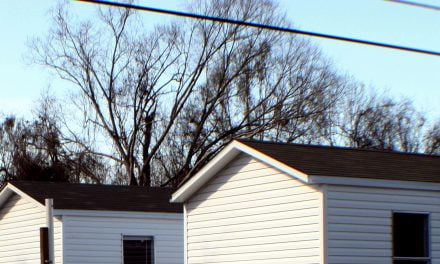Flush with new equity created by the recent increase in home prices, numerous homeowners will consider upgrading to a home more suitable for their needs.
Concurrent closings are preferred, yet not always possible. Thus, upgrading to a replacement residence presents the homeowner and their agent with the logistical challenge of timing the closing of their current home’s sale with the closing of their new home’s purchase.
Often, the seller’s closing date on the sale of their home does not sync up with the delayed closing of their purchase escrow for the replacement residence. In this situation, the seller may be able to negotiate with their buyer for a short-term lease-back of the home they are selling. This lease-back arrangement is also known as a holdover.
The holdover agreement allows the seller to remain in possession for the time needed to close their purchase escrow and take occupancy of the replacement residence. Thus, the seller avoids a double move.
For a buyer who has no immediate need to occupy the home, common questions about allowing the seller to remain in possession include:
- Is a lease/rental agreement necessary?
- What rent is to be charged?
- Who is responsible for maintenance?
- What if the seller damages the property?
- How is the seller removed if they do not vacate as agreed?
Holdover tenancy
A holdover tenancy occurs when the buyer consents to the seller continuing to occupy the property after escrow closes. The agreed-to holdover tenancy transforms the buyer/seller relationship to that of landlord/tenant, even if they do not enter into a written occupancy agreement. A tenancy is formed if the seller merely retains possession after closing with the consent of the buyer. [Covina Manor Inc. v. Hatch (1955) 133 CA2d 790]
However, a holdover tenancy formed without a written occupancy agreement poses questions about the buyer’s need to protect their interest in the newly acquired property. What if the seller-turned-tenant loses interest in maintaining the property, commits outright waste, defaults on rent payments or does not move out? Use of a holdover occupancy agreement can greatly reduce these risks by putting the agreed-to terms in writing. [See first tuesday Form 272]
The holdover occupancy agreement is best attached to the purchase agreement as an addendum, but may be agreed to prior to closing escrow. Typically, the buyer is presented with the agreement in a counteroffer negotiating for the continued occupancy. The agreement clarifies the buyer’s ownership rights and, more importantly, creates a landlord-tenant relationship for quick resolution of any disputes over occupancy.
The holdover occupancy agreement contains many provisions commonly found in lease agreements. These include rent and security amounts, as well as other rights and obligations established between the landlord and tenant. Although holdover occupancy agreements resemble other lease agreements, the special circumstances of the holdover tenancy require some special provisions.
Related article:
The holdover occupancy agreement – a seller’s lease-back after close of escrow
Creation and the length of tenancy
Two special provisions involve the creation and length of the holdover. To create the tenancy:
- the buyer, as a landlord, agrees to lease the premises for a certain term; and
- the seller, as a tenant, agrees to pay for the use of the premises.
In addition, the amount of rent and time of payment is stated. The occupancy agreement provides for the rental period to be set as a determinable “fixed” time period. A fixed-term tenancy terminates automatically without need of prior notice from the landlord. [Camp v. Matich (1948) 87 CA2d 660]
The security deposit and the first month’s rent (or all months’ rent) are best disbursed by escrow from the seller’s proceeds at the close of escrow. Supplemental escrow instructions are to be prepared instructing escrow to pay the buyer the rent due.
The occupancy agreement contains a provision for payment of rent if the seller does not vacate when the holdover expires. This amount is sharply increased and made payable at a daily rate to discourage the seller from remaining in the premises beyond the agreed-to term of occupancy.
However, if the seller retains possession on expiration of the agreed-to term of occupancy, the buyer, as the landlord, may begin unlawful detainer proceedings without further notice. [Ryland v. Applebaum (1924 70 CA 268]
Getting rid of the seller after the holdover tenancy period expires is the buyer’s biggest risk, along with concerns over maintenance.
Condition of property
During the buyer’s final inspection, the buyer and seller need to complete a Condition of Premises Addendum to the holdover occupancy agreement. This checklist documents the condition of the appliances, fixtures and other improvements to the house. [See first tuesday Form 560]
When the seller vacates, the checklist serves as evidence of the need for repairs and maintenance brought on by the holdover seller’s conduct. The cost of these repairs is deducted from the security deposit.
So who is liable for the cost of repairs during the holdover tenancy period? Under landlord/tenant law, the landlord (in this case the buyer) is responsible for maintaining the property in a habitable condition.
This includes:
- keeping the windows, walls and roof effectively waterproofed;
- maintain the plumbing, heating, gas and electric facilities in working order; and
- maintaining the building, grounds and common areas in a sanitary condition. [Calif. Civil Code §1941.1]
Unless the seller concealed the flaws, or they were caused by the seller’s negligence after the close of escrow, the buyer as the landlord is responsible for making the repairs and bears the costs. [Herzog v. Capital Co. (1945) 27 C2d 349]
To help defray unexpected costs, the purchase of a home warranty insurance policy needs to be considered. The cost of the home warranty insurance is negotiated between the buyer and seller on entering into the purchase agreement. [See first tuesday Form 150 §11.1 (c)]
The policy covers the buyer for one year after escrow closes. Generally, all mechanical systems including appliances are covered by the insurance if listed. These items and other aspects of the improvements need to be kept in good repair if the property is to be considered habitable. Thus, home warranty insurance offers the buyer a cushion against unexpected major property defects.
Related article:
Seller’s responsibilities as a tenant
Like any other landlord/tenant agreement, the holdover seller as a tenant agrees to maintain the property in good condition, pay the rent when due and pay for specified utilities and service charges. The tenant must also allow the landlord to enter the premises, on 24 hours’ notice, to supply services and repairs.
The seller, now turned tenant, needs to purchase a renter’s insurance policy to replace their prior homeowner’s insurance policy coverage of personal items and liabilities. When ordering the insurance, they need to confirm it covers any liability they may incur as a result of injury or negligence caused by a guest or family member.
When you as the buyer’s agent are faced with negotiating a seller holdover situation, follow these guidelines to assure your buyer is fully protected. A diligent agent covers all bases. Not only does this show special knowledge and professionalism, it produces a satisfied client.


















